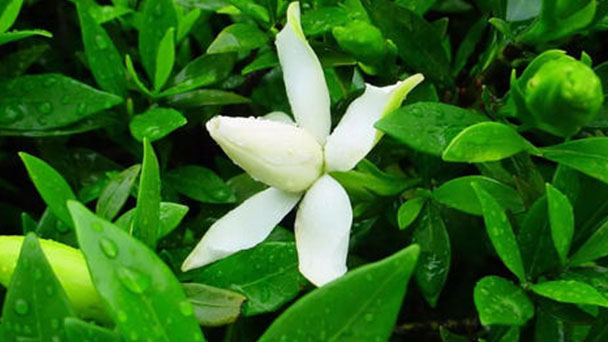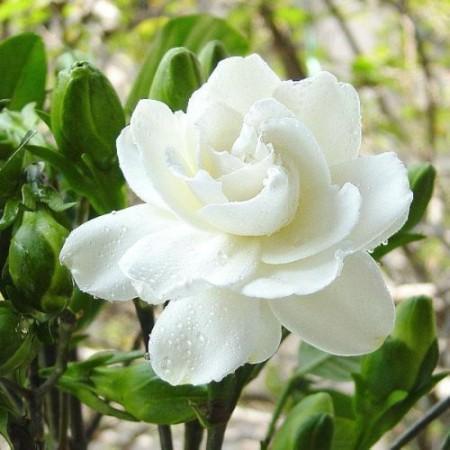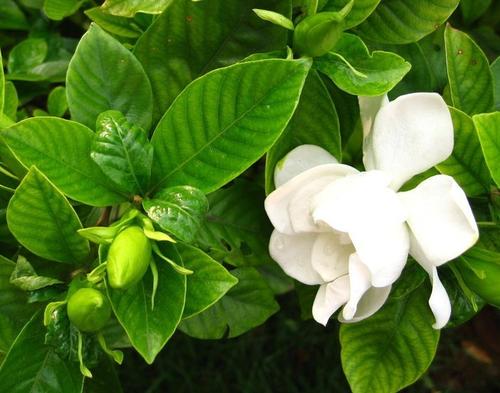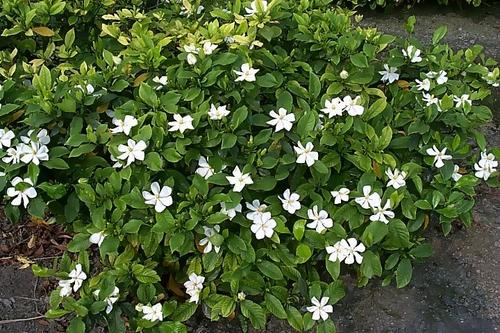How to care for Cape Jasmine
Written by Maggie
Oct 13 2021

Cape Jasmine's biggest characteristic is luxuriant leaves, evergreen leaves, white flowers like jade and fragrant simple but elegant, elegant fragrance. Many people like Cape Jasmine and want to buy it to grow it at home. But how to care for Cape Jasmine leaves yellowing or falling? Let's look together.

Cape Jasmine care for leaves yellowing
The yellow leaves of Cape Jasmine are caused by inadequate watering. When watered too much, the plants need to be dug out of the soil, cut off the rotten branches, disinfected and dried before being replanted. When watered too little, they need to be watered in a timely and thorough way. Improper lighting is also one of the reasons, ensure more than 5 hours of scattered light per day. In the summer, do a good job of shading measures. The following are details of Cape jasmine care for leaves yellowing.
Improper watering can cause the leaves of cape jasmine to turn yellow. When the Cape jasmine overwatering, lead to the soil at the bottom of the water too much, cause plant root rot, affect plant root respiration and the ability of moisture absorption, slow the growth of plants, water shortage, the state of the plant will be a serious water shortage, cannot provide sufficient moisture leaf, leaf withered and yellow phenomenon.
The wrong light also causes Cape Jasmine's leaves to turn yellow. When we care for Cape Jasmine, if Cape jasmine is under a strong light environment for a long time, moisture evaporates faster in plant leaves, strong light can cause leaf burns. When plants grow in a dark environment for a long time, the blade can't be normal photosynthesis, chlorophyll content is low, lutein content accumulation is overmuch, cause yellow leaf.
If it is caused by too much watering, should stop watering in time, dig out the plant from the soil, clean up the soil on the root system of the plant, cut off the rotting root system, disinfect and dry it, and then plant it in the new soil. If it is caused by insufficient watering, the first yellow leaves will be cut off, and then water again, watering to water from the bottom of the basin outflow, keep the soil moist.
If it is caused by strong light, the plant will be moved to a ventilated half-shaded place in time, appropriate watering, culture for 3 ~ 5 days, and then it will be moved to the scattered light environment culture. If the problem is insufficient light, place the plants in an environment with scattered light, ensuring more than five hours of light per day.

Cape Jasmine care for leaves falling
Long-term exposure to strong light will cause the leaves to turn yellow and fall. At this time, Cape Jasmine should be moved to a ventilated semi-shady environment for cultivation, and water should be sprayed on the leaves and surrounding areas of the plant appropriately. Overfertilization in Cape Jasmine can also cause leaves to turn yellow and fall off. Water them with plenty of water to dilute organic matter, or change pots. The following are details of Cape Jasmine care for leaves falling.
When the light is too intense, Cape Jasmine leaves turn yellow and fall off. Under strong light for a long time, Cape Jasmine leaves are easy to be burned. When the temperature is too high, the water evaporation of leaves is accelerated, and the water supply of plant roots is insufficient, resulting in the failure of normal growth of plant leaves, yellowing and shedding.
When we care for Cape Jasmine, if we apply too much fertilizer, Cape Jasmine leaves turned yellow, dried up, and withered. Excessive fertilization would result in the accumulation of a large number of organic substances at the bottom of the soil, resulting in transpiration and heat phenomena, resulting in the burning of plant roots and affecting the normal growth and development of plants.
If the light is too strong and causes the leaves of Cape Jasmine to wither and turn yellow, it is necessary to move the Cape Jasmine to a ventilated and cool place in time, spray water on the leaves and surrounding of the plant to supplement water and cool down, cut off the withered leaves, wait for 2 ~ 3 days, and then place them in the place where the scattered light is used for culture.
If too much fertilization results in yellow leaves falling off in Cape Jasmine, you can irrigate the plant-soil with a lot of water to dilute the concentration of organic matter in the soil. You can also dig out the roots of the plant, pruning away the rotting roots, sterilize them, dry them, and plant them again.

Read Next:
Cape Jasmine Profile
Cape Jasmine (Gardenia Jasminoides) Care & Propagation Guide
Latest Updated
- Benefits of Bugleweed - 7 Science-backed Health Benefits
- Bugleweed Dangers & Side Effects - Is It Poisonous?
- How to Plant Evergreen Trees - What You Should Know
- When to Plant Evergreens - Grow Guide for Evergreen Trees
- 12 Wonderful Evergreen Shrubs for Your Garden
- 12 Popular Evergreen Plants with Pictures for Beginners
- When And How To Prune A Lilac Bush Like a Pro
- How to Grow & Care for Lilac Vine (Hardenbergia Violacea)
- Japanese Lilac Tree (Syringa Reticulata) Care & Propagation Guide
- Shumard Oak Pros and Cons - What to Know
Popular Articles
- Winter maintenance of Antirrhinum Majus
- How to Grow Terminalia Mantaly Tree
- How to Grow and Care for Crossostephium Chinense
- How to grow Antirrhinum Majus in spring
- Peristeria Elata (Dove Orchid) Profile: Info & Care Guide
- Underwatered Snake Plant (Sansevieria Trifasciata) - Signs And How To Fix
- How to Care for Brazilian Jasmine Plant (Mandevilla Sanderi)
- How to Grow & Care for Graptopetalum Purple Delight in Summer
- Rosa Chinensis (China Rose): Plant Growing & Care Tips
- How to Care for Baby Sun Rose (Aptenia Cordifolia)